Yin Yoga: Lung Meridian poses
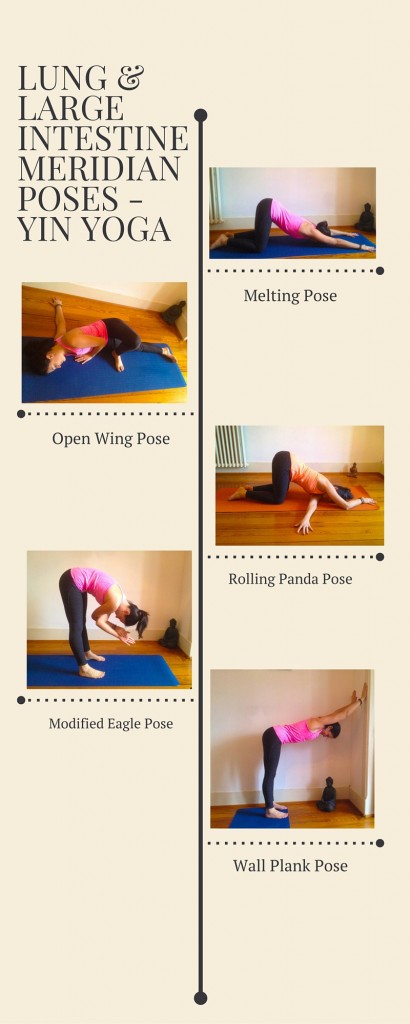
Lung meridian poses
This is a series of post following our main post, Yin Yoga, what is it exactly?
As explained in this article, we practice Yin poses to work on different meridians. There are 12 main meridians that run through our body and are interconnected to one another and grouped into categories to explain emotions and how they impact our body.
We really like to mix some Yin poses with Ashtanga Yoga. Yin Yoga is obviously “Yin” and Ashtanga “Yang”. To go deeper in theory, the Yin side of the body is more internal. It is the feminine side. Yin means also: calm, low, cold, dark, dry, solid. It is related to cold seasons.
The yang side is the opposite: It is the masculine side of the body, external, hot, high, luminous, exposed, humid, active.
But nothing is 100% yin or 100% Yang. It is why we can find in the symbol a little bit of Yin and little bit of Yang in both of them.
As we begin these series of articles, we are going to start with one of our main organs, the lungs. The lung meridian starts at the chest, just below the shoulder and runs inside the arms all of the way to the corner of the thumbnail. This meridian is interconnected with the large intestine meridian, which will be covered next in our series. Here it’s a graph of the Lung meridian to have a better understanding.
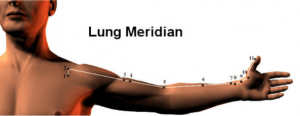
Why is it important to you?
When one or more different meridians are blocked, you may experience different emotions, and breakouts in different body tissues. For example, the lung meridian is linked to the emotion of sadness, and may help prevent skin breakouts. The lung meridian is important as it controls the breath and helps the heart in the circulation of the blood. It is normal to feel certain emotions during the poses, breathe through them and let your lungs do the rest.
Besides the poses below, eating foods rich in metal as well as eating a bit of spicy food may help. White color is also associated with this meridian, so it helps to wear more white and put white bed sheets.
Add the following poses to your yoga practice in order to work this meridian
Wall Plank pose
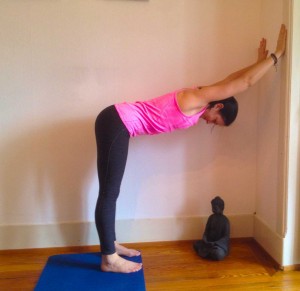
Start by standing in front of a wall at arm’s length, and place your hands against the wall. Always make sure your fingers are wide and pointing up.
Start walking backwards until your tailbone is pointing up and you have a natural curve on your lower back. Suck the belly in as you want to maintain an active belly.
As you suck in the belly, you will naturally lower your ribcage. Keep long through your tailbone and legs towards the floor. You can always bend the knees to make sure you’re not overextending them. Arms, head and spine are active and hold the pose for 2 to 3 minutes.
It’s very important after you are done with the pose to go into child’s pose for 1-2 minutes let your body rest and work in the lung meridian before moving to the next pose.
CLICK HERE to get these poses in an easy to follow infographic for you to print at home!
Open Wings pose
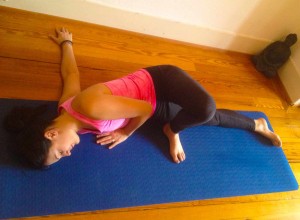
After child’s pose, lay down on the belly, arms open and right ear on the mat.
Place your left hand close to your chest, bend your left knee and push with your left hand against the floor until your left foot is placed behind your right leg. Try to keep your right ear on the floor and hold this position for 2 to 3 minutes.
Go back on your belly slowly, and change sides, left ear on the floor and repeat steps above. You can use a pillow or blanket for your head for better comfort.
Remember to go back into child’s pose after you are done with both sides to let your body rest and work in the meridian before moving to the next pose.
Melting pose (Anahatasana)

After child’s pose, melting pose or Anahatasana, is very simple. Just walk both arms forward until your tailbone is pointing upwards. Make sure both arms are well extended. Keep your forehead on the floor, relax and hold the pose for 2 to 3 minutes.
If you have knee issues, place a pillow or something comfortable under them to cushion your knees. After time is up, go back to child’s pose then finish in Savasana.
These lung meridian poses are also great for working back, chest, and arms, as well as other meridians that will be covered in future posts. Keep posted, as we will be releasing more soon. (be advise if you have any specific physical conditions or discomfort, do not practice these poses).
Don’t miss any of our upcoming posts, join our newsletter below.
Namaste!
Tags:Ashtanga, Child's pose, melting pose, open wings, poses, wall plank, yang, Yin, yin yoga
There is one comment
Comments are closed.

Yin Yoga, what is it exactly?
Yin Yoga and more Yin yoga is a slow-paced style of yoga with poses that…

Happy New Year 2016 – our detox recipe
Happy New Year to all ! We wish you a wonderful new Year, full of…
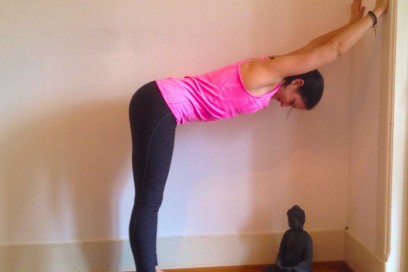
Yin Yoga: Heart Meridian Poses
Heart Meridian Poses We continue the series of posts on Yin Yoga Meridians, following our…


[…] main meridians, 6 yin to 6 yang in order to balance every part of our bodies. We talked about the Lung Meridian last week. The lung meridian and the large intestine are connected. The lung meridian is Yin and […]